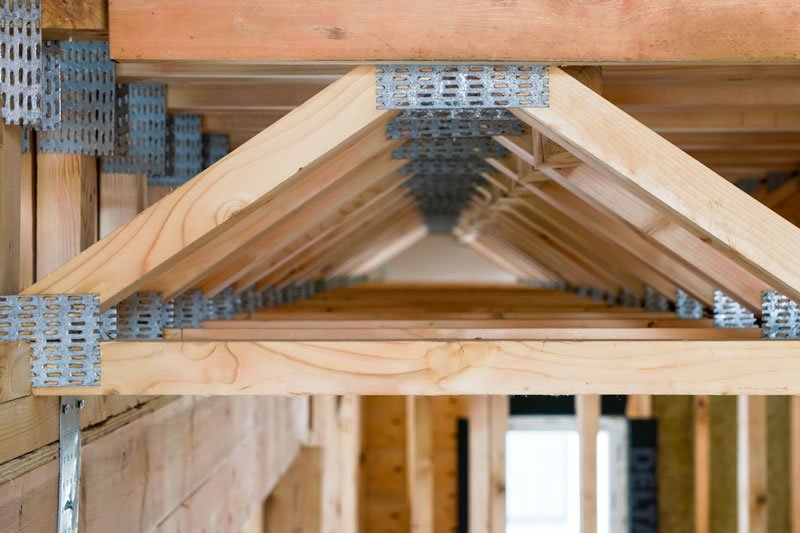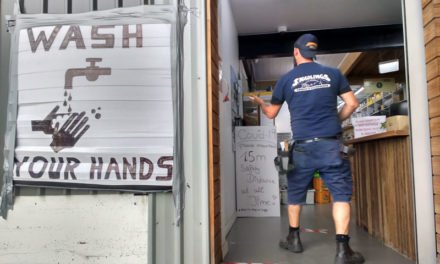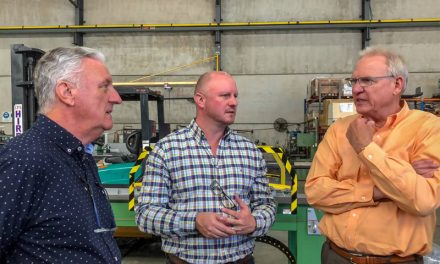There’s a way out of every problem, but some solutions are better than others. By Paul Davis.
Nobody over, say, 25 years old would think that jumping off a dam wall into the base of a gushing spillway was a good idea. In fact, probably only someone who was overconfident, young and male would even contemplate it in the first place. A 20-year-old Paul Davis ticked all those boxes.
Having missed the rock when I checked the water, I didn’t miss it when I jumped; to the horror of observers, I bounced off the water surface. For a moment, I thought I was okay but the grinding of shattered bones in my ankle told me otherwise.
The rescue was almost as bad as the injury; lying in pain in the bottom of a canoe, it took a couple of hours to get me back to civilisation. And on the way my rescuers managed to run the canoe into a car wreck dumped into a rapid. Just saying – the jarring wasn’t enjoyable.
So, lets jump into the world of floor joists – just not in such a reckless way. And definitely with a happier outcome! Continuing a theme and prompted by the ongoing timber shortage, I’m looking at the options you have to fabricate deeper floor joists rather than buying them off the shelf.
Having said that, everything I note below uses smaller-section timbers, which I know are also in short supply. And, pre-empting criticism some suppliers might have of this article, space is limited so this is only a superficial summary and if you want to know more go to the relevant supplier.
All three nailplate suppliers make fairly similar V-shaped metal web joist products. Structurally, this configuration of the webs is somewhat sub-optimal but it doesn’t matter; they are strong enough for a joist application. A primary benefit of these systems is that they use a lot less in the way of components than other floor truss systems and so are relatively quick to manufacture.
‘Longreach’ floor trusses use square cut ends for the diagonal webs with timber chords. So these are great for using offcuts of timber and the square cuts make life simple, but the nailplate connectors have to bridge across the gaps at the diagonal webs ends and so these types of joists tend to use larger plates.
‘Steelwood’ floor trusses use vertical timber webs and diagonal steel webs. From an engineering perspective, this is superior to the ‘V’ webbed joists and so can carry higher loads. And because these trusses come in depths up to about 660mm, you can use them for very long spans. But they use more components and consequently labour costs may be increased.
It is also quite possible for you to make a straight-up full timber truss joist with double-cut diagonal webs and nailplates. Even if your software doesn’t explicitly allow you to design this sort of floor truss, it can still be done by applying user loads. You just need to do that under some close guidance from a timber engineer who knows the loads and other parameters for design.
Benefits of all floor truss systems are that services pass easily through them and they can be cambered. On the other hand, adjusting them for length or otherwise on site is not easy although the suppliers’ engineers have come up with various tricks to do this.
Harking back to recent Truss Talk articles, it’s also possible for you to construct a plywood floor joist composed of timber top and bottom chords and plywood webs. It would even be possible to use plywood on one side only to effectively make a ‘C’ or ‘channel’ shape. I’m not aware of anyone who has done the engineering for this but, from an engineering point of view, it’s a potentially viable product.
I’m also not aware of anyone who has done the engineering for this option, but it would be possible to make something like a plywood box beam using other structural board product for which engineering properties are available, such as oriented strand board or hardboard.
Manufacturing any floor joist in your plant will consume materials and time and occupy equipment. But with the current timber shortages and the elevated prices, I suspect there is a window where if you can value-add to make deeper engineered joists there is potential for margins to be worthwhile. And if you simply can’t get those deeper materials off the shelf, then manufacture may be your only option!
To finish the story of my encounter with the rock, the worst part of it wasn’t the initial pain, or even, thanks to the vagaries of the hospital system, having the broken bones manipulated without an anaesthetic.
Rather, as I lay in the bottom of that canoe on my side, my swimmers rode up, revealing lily-white flesh that had never before seen the light of day. For days after, I alternated between the pain of lying on the broken leg and that of lying on my sunburnt beetroot butt!
Paul Davis is an independent structural engineer managing his own consulting firm Project X Solutions Pty Ltd. The views in this column are Paul’s and do not reflect the opinions of TimberTrader News. Phone: 02 4576 1555 Email: paul@projectxsolutions.com.au












